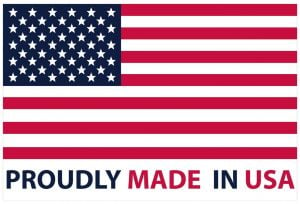The truth about loyalty programs is that not all of them will work for your business. You need to find a program structure that aligns with your business’s needs and your target audience’s desires and behavior.
Once you have a good understanding of who your customers are and what motivates them, you can then begin designing an effective loyalty program. Let’s look at the 7 most common customer loyalty program structures.
Points Program
Point-based customer loyalty programs are among the most popular, common types of loyalty programs. They are incredibly useful because they offer low barriers of entry and are low commitment. Customers can immediately start earning and redeeming points for credits toward their next purchase, discounted services, free shipping, and more. Customers can keep track of their points through an online account, mobile app, or loyalty card, keeping them continuously engaged, connected, and committed to benefiting from the brand’s added value.
Since points programs are so common, customers recognize the format and understand how to take advantage of the rewards, making for an uncomplicated experience. As a result, people don’t need to be “sold” to see the value of a points program. However, some downfalls of points programs are: they are purely transactional and acquisition-focused without much differentiation between members.
Tiered Program
Tiered loyalty programs are similar to points programs because they usually allow customers to gain points with their purchases. However, the key difference between the two programs is that tiered loyalty programs offer customers status. Tiered programs create an aura of exclusivity and competition among customers, generally motivating members in lower tiers to make an effort to get to the next level of spending and rewards. The more restricted the reward, the greater the appeal. Moving up the loyalty ladder is exciting and makes customers feel elite.
Unlike points programs, tiered loyalty programs work better for businesses that want high commitment and frequent purchases from their customers. Tier programs focus on creating high-value customers and reserve the best rewards exclusively for the best customers. However, tier programs also require a certain level of commitment from consumers, and the program will not be as attractive to lower-tier members who aren’t willing to spend to increase their status and rewards.
Game-Based Program
Who doesn’t love a fun game? Game-based loyalty programs play on human reward-seeking behavior, natural competitiveness, and the fear of missing out on something fun or valuable. Customers are motivated to earn virtual badges, accumulate points, or advance levels. Like a video game, they can then “trade” points for rewards or unlock new benefits when they earn new badges or advance into a new level. Gamified loyalty programs are vibrant and highly engaging (even addicting) to customers, encouraging them to frequently “play” and purchase with the brand. However, before implementing gamification, businesses must determine if their audience is willing to engage in it and determine the right rewards to motivate them.
Coalition (Partnership) Program
Do you want to team up with another business? Coalition loyalty programs use strategic partnerships with other businesses to acquire new customers and grow. In these programs, customers can earn rewards more quickly and have more choice on where to use them. As a result, each business gets access to an expanded customer base. Another benefit is that the partnered businesses can split the operational costs of running a joint rewards program.
However, some downsides to coalition programs are: an inability to stand out and differentiate the loyalty program from the partner, no distinct competitive advantage, and the risk of customers redeeming points more so with partner brand. Coalition programs may work best as short-term solutions for businesses who want to quickly access a new customer base and gain increased brand awareness.
Fee-Based, Paid Program
More and more businesses are implementing paid loyalty programs. Whether it is an annual fee or monthly subscription, these programs require customers to pay upfront to unlock rewards and benefits. Paid loyalty programs offer customers instant gratification; customers do not have to wait to accumulate rewards.
However, premium paid loyalty programs are not for everyone. These programs create a high barrier of entry for the average customer and convincing customers to pay a membership fee can be challenging in the beginning.
Value-Based Program
Value-based customer loyalty programs are less about monetary rewards and more about connecting with your customers on a deeper level. It usually involves donating a percentage of purchases to charity or welfare programs your target audience is interested in helping. Although this program doesn’t actually reward customers with discounts or cash back, the donations hold emotional value for customers. Customers appreciate that their purchase can benefit society.
Hybrid Program
There is no one right way to build a loyalty program. Many businesses will combine two or more loyalty programs until they have a structure that works for them. A common hybrid is one that involves points, tiers, and gamification. Picking out the loyalty strategies that best suit your business helps you customize and create a unique customer experience. This mix-and-match approach allows for increased personalization, control, and flexibility.
Which loyalty program is right for your brand?
Ready to Build a Unique Loyalty Program?
Just like other marketing efforts, there isn’t a one-shoe-fits-all solution. If you’re ready to craft a unique marketing strategy that builds loyalty while fitting your business’s needs and goals, contact Sun Sign Designs for a consultation. We love solving difficult marketing challenges.



